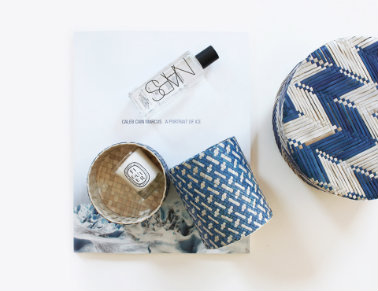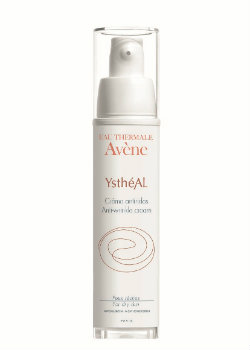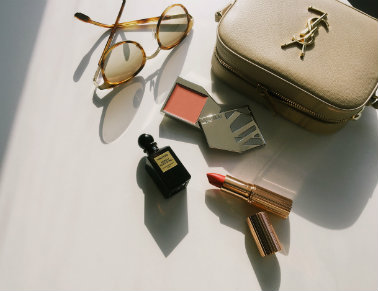
Vitamin A friend or foe?
Friend or foe?
As beauty-conscious individuals, it seems like we are on a never-ending quest towards the perfect complexion. We tirelessly research skincare products, following the latest dermatological trends in an effort to gain flawless skin. Vitamin A seems to be one of the most popular ingredients in skincare. Known for its ability to fight acne, slow aging, and promote healthy skin, it doesn’t look like it’s going anywhere anytime soon. Despite its many benefits, however, there are consumers who remain cautious about adding it to their regimen.
Vitamin A comes in many forms: retinols, Retin A, beta carotene and esters. Such an array of options, while convenient for some, can be confusing for others. Without proper guidance, it is difficult to understand which one to use. Factor in side effects like redness, sensitivity, and dry patches, and it is no wonder that reluctant users avoid Vitamin A altogether.
To help showcase vitamin A in its true light, BWB turned to Candace Noonan, LE COE, Director of Training for Environ Skin Care for some insight.
With its ability to improve the appearance of fine lines, wrinkles and photo-aging, which is aging due to long-term sun exposure.
BWB: Why is vitamin A an essential ingredient for consumers to include in their skin care regimen?
Scientific Research has shown that vitamin A is a key DNA regulator in the skin. With its ability to improve the appearance of fine lines, wrinkles and photo-aging, which is aging due to long-term sun exposure. We have seen that, over time, Vitamin A also improves the appearance of uneven skin tone, and yields smoother skin texture and hydration.
Foods rich in vitamin A include fatty fish, kale, sweet potatoes, carrots, collard greens, chicken liver, and more. However topical application of Vitamin A is much more instantaneous in its benefits.
BWB: Can everyone use vitamin A products on their skin?
Everyone can use topical vitamin A. Our bodies do not produce this vitamin like we do Vitamin D, so we rely on supplements in our diet and skin products.
Foods rich in vitamin A include fatty fish, kale, sweet potatoes, carrots, collard greens, chicken liver, and more. However, it takes eating these foods for 7 days to increase the serum levels of vitamin A in our skin. Studies have shown that topical application of Vitamin A is much more instantaneous in its benefits. And, because light exposure depletes levels of vitamin A, application morning and evening is essential.
When it comes to the age of the consumer, the type of vitamin A is also a consideration. Prescription Retinoic Acid is more beneficial for mature, non-sensitive skin. It has been shown to be very harsh on the skin, causing redness, flaking and sensitivity. Younger and/or more sensitive should rely on ester forms of vitamin A.
When using an over-the-counter retinol, one needs to be assured of the standard and quality of the manufacturer.
BWB: Is there a way to use vitamin A without suffering from the common side effects, like redness, sensitivity, dryness and flaking?
Retinols are very unstable and have a short shelf life. When using an over-the-counter retinol, one needs to be assured of the standard and quality of the manufacturer. In addition, like I mentioned above, there are forms of Vitamin A that do not cause these side effects, including the fat or ester form, and the Beta Carotene or plant form.
Our specialized packaging also protects our precious ingredients, which are carefully picked based only on their ability to produce measurable and sustainable results.
BWB: What makes Environ’s approach to vitamin A different from other skin care companies?
Environ is founded on tried and true philosophies confirmed over the past 25 years. We are one of only a few top tier skin care brands that have their own dedicated manufacturing facility. Our sterile, pharmaceutical grade factory features pressurized air locks, nitrogen blankets, red/yellow light, airless filling and special, trade secret water systems that allow us to produce products free of preservatives. Our specialized packaging also protects our precious ingredients, which are carefully picked based only on their ability to produce measurable and sustainable results.
We are often asked whether we will add new ingredients, as new ones are constantly advertised as being better, safer, or faster acting. However, when we look at our long-term results and longevity, it is no wonder that we are the fastest growing clinical brand; we have increased twofold in the past three years.
We are also proud of our step up program, which includes two skin care lines numbered from 1 to 4. Representing their respective strengths, 1 is the most mild while 4 contains the highest concentration of ingredients. The AVST line is for more sensitive and acne prone skin and the C-Quence line, which also incorporates vitamin C, is great for normal and maturing skin. Environ also has a dedicated, trained staff that advises everyone using their products, keeping tabs on what regimens are the best suited for an individual’s needs. Visit dermaconcepts.com to find an Environ-affiliated practice closest to you.
****
For those of you in search of a vitamin A skincare line without an associated skin care professional, we love Avene’s YstheAL line, which includes eye care, an anti-wrinkle cream and an anti-wrinkle emulsion. The active ingredients are retinaldehyde – a non-irritating form of vitamin A, lipopeptides, vitamin E, and of course Avene’s Thermal spring Water. These are great products to test out the waters before committing to a more active form of vitamin A.
Vitamin A is a necessary ingredient when it comes to healthy skin. Now that we have equipped you with ways to avoid its side effects, your skincare possibilities are endless.









